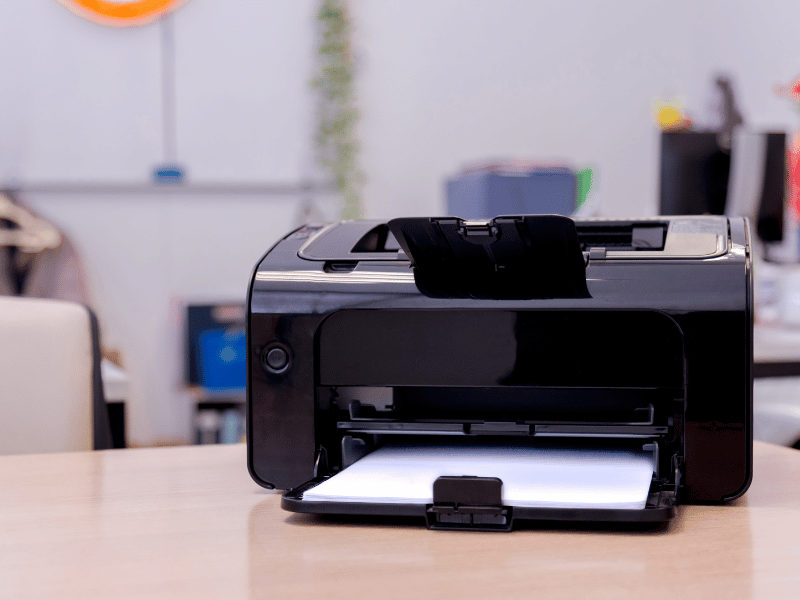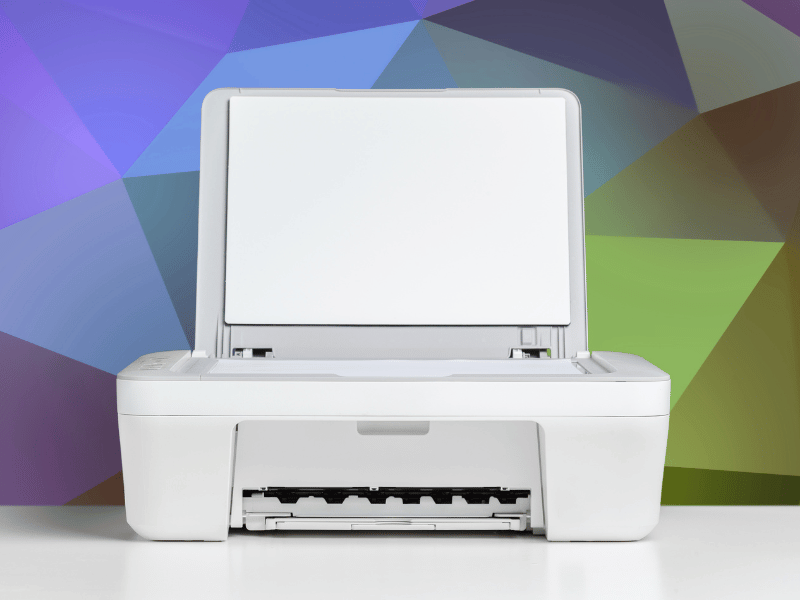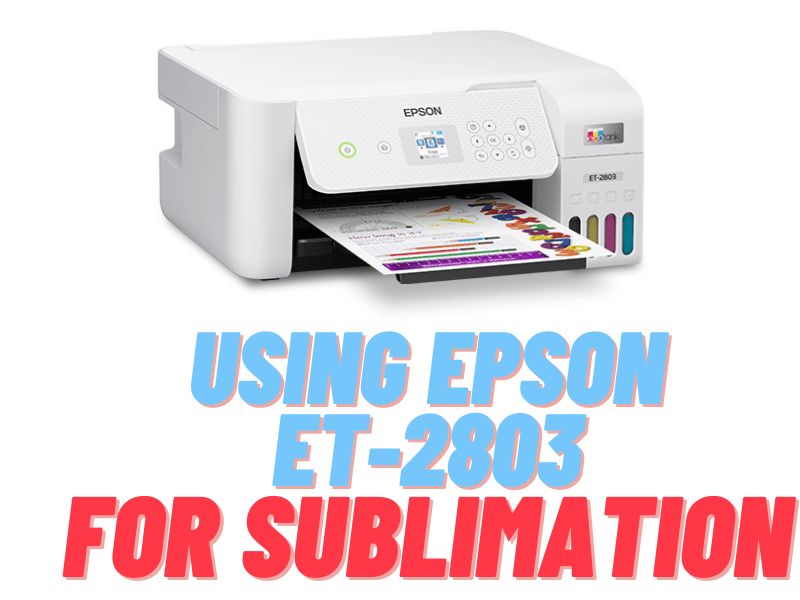In today’s digital age, where capturing moments has become effortless, the desire to preserve memories in physical form remains strong. When it comes to printing photos, the quality of the final output is paramount. In this article, we delve into the world of printers and compare the different types to determine which one reigns supreme in producing the highest-quality photos.
Exploring Printer Types:
I. Inkjet Printers:
Inkjet printers have long been the go-to choice for photo printing enthusiasts. Their popularity can be attributed to their exceptional color accuracy, high resolution, and versatility. Using microscopic droplets of ink, inkjet printers meticulously reproduce vibrant colors and intricate details, resulting in stunning photo prints. The wide range of available inkjet paper options further enhances the quality and longevity of the prints. However, it’s worth noting that inkjet printers may require periodic maintenance, and the cost of ink cartridges can add up over time.
II. Dye Sublimation Printers:
As an alternative to inkjet printers, dye sublimation printers have gained recognition for their ability to produce professional-grade photo prints. Dye sublimation printers work by transferring solid dye onto paper using heat. This process ensures smooth color transitions, exceptional depth, and an impressive level of detail. Moreover, dye sublimation prints are resistant to smudging and fading, making them a preferred choice for archival purposes. However, the initial investment in a dye sublimation printer can be higher, and they may have limited paper options available.
III. Laser Printers:
While laser printers are commonly associated with text and document printing, technological advancements have improved their capabilities for photo printing as well. Laser printers utilize a toner cartridge and electrostatic charges to transfer powdered ink onto paper. They offer fast printing speeds, sharp text, and decent image quality. However, when it comes to reproducing intricate details, laser printers may fall slightly short compared to inkjet and dye sublimation printers. Additionally, color accuracy and tonal range can be more limited in laser prints.
Which type of printer produces the highest quality photos?
When it comes to determining which type of printer produces the highest quality photos, it largely depends on various factors and personal preferences. However, inkjet printers and dye sublimation printers are often considered the top contenders for achieving exceptional photo quality.
Inkjet printers have long been favored by photo enthusiasts due to their ability to produce vibrant colors, sharp details, and high resolutions. They use microscopic droplets of ink to recreate images with precision, resulting in stunning prints. Additionally, inkjet printers offer a wide range of paper options, including specialized photo papers, which further enhance the quality and longevity of the prints.
On the other hand, dye sublimation printers have gained recognition for their professional-grade photo printing capabilities. These printers utilize a heat transfer process to infuse solid dye onto paper, resulting in prints with smooth color transitions, exceptional depth, and remarkable detail. Dye sublimation prints are also known for their resistance to smudging and fading, making them ideal for archival purposes.
While laser printers are commonly associated with text and document printing, they have made significant advancements in photo printing as well. Laser printers use toner cartridges and electrostatic charges to transfer powdered ink onto paper. While laser prints may not match the intricate details and color accuracy of inkjet or dye sublimation prints, they still offer sharp text and decent image quality. Laser printers are often favored for their fast printing speeds and durability.
Ultimately, the choice between inkjet printers, dye sublimation printers, and laser printers for high-quality photo printing depends on individual needs and preferences. If you prioritize exceptional color accuracy, fine details, and a wide range of paper options, inkjet printers or dye sublimation printers are the recommended choices. However, if you require fast printing speeds and durability for everyday photo printing, a laser printer may suffice.
It’s important to consider factors such as resolution, color accuracy, tonal range, paper selection, and maintenance when making a decision. Evaluating printer specifications, reading reviews, and considering sample prints can also help in determining the best printer for your specific photo printing needs.
Is inkjet or laser better for photos?
When it comes to choosing between inkjet and laser printers for photo printing, there are some key considerations to keep in mind.
Inkjet printers are often regarded as the preferred choice for high-quality photo prints. They excel in producing vibrant colors, sharp details, and accurate color reproduction. Inkjet printers use a system of microscopic droplets of ink that are precisely applied to the paper, resulting in excellent color blending and smooth gradients. They also typically offer a wide range of paper options, including specialized photo papers, which further enhance the quality and longevity of the prints.
On the other hand, laser printers have traditionally been associated with text and document printing. However, advancements in laser printing technology have improved their capabilities for photo printing as well. Laser printers use toner cartridges and electrostatic charges to transfer powdered ink (toner) onto the paper. While laser printers may not match the intricate details and color accuracy of inkjet prints, they can still produce satisfactory photo prints with sharp text and decent image quality. Laser printers are often favored for their fast printing speeds, durability, and lower cost per page.
To determine which type of printer is better for photos, it depends on your specific needs and preferences. If achieving the highest quality photo prints with exceptional color accuracy and fine details is your primary concern, an inkjet printer is likely the better choice. Inkjet printers are widely recognized for their ability to produce professional-grade photo prints.
On the other hand, if you prioritize fast printing speeds, lower cost per page, and the durability of prints, a laser printer may be more suitable for your needs. Laser printers can handle high volumes of printing efficiently and are often preferred for everyday photo printing, such as printing snapshots or proofs.
It’s worth noting that both inkjet and laser printers have their strengths and limitations when it comes to photo printing. Additionally, advancements in technology are continually improving the capabilities of both printer types. When making a decision, it’s essential to consider factors such as the level of detail and color accuracy you require, the type of prints you’ll be producing, and your budget. Additionally, evaluating printer specifications, reading reviews, and considering sample prints can help inform your choice and ensure that you select the printer that best suits your specific photo printing needs.
Why is inkjet better for photos?

Inkjet printers are often considered better for photo printing due to several reasons:
- Color Accuracy: Inkjet printers are known for their exceptional color accuracy. They utilize a wide range of ink colors, including specialized photo inks, to produce vibrant and true-to-life colors in prints. The fine droplets of ink sprayed onto the paper allow for precise color placement, resulting in accurate color reproduction and smooth color transitions. This level of color accuracy is crucial for capturing the nuances and details in photographs.
- High Resolution: Inkjet printers typically offer high-resolution capabilities, measured in dots per inch (DPI). Higher DPI means more dots of ink per inch, resulting in greater detail and sharper images. Inkjet printers can achieve resolutions of 4800 DPI or even higher, allowing for crisp and finely detailed prints. This high resolution is especially important when printing larger-sized photos or when intricate details need to be preserved.
- Wide Color Gamut: The color gamut refers to the range of colors that a printer can reproduce. Inkjet printers generally have a wider color gamut compared to other types of printers, including laser printers. This wider color range allows inkjet printers to accurately reproduce a broader spectrum of colors, including subtle variations and vibrant hues, resulting in more lifelike and visually appealing photo prints.
- Paper Options: Inkjet printers offer a wide variety of paper options specifically designed for photo printing. These specialized photo papers come in different finishes, such as glossy, matte, or satin, and are optimized to enhance the quality and longevity of photo prints. They often have coatings that allow for better ink absorption, improved color vibrancy, and resistance to smudging or fading over time. The availability of diverse paper choices ensures that you can select the most suitable paper for your specific photo printing needs.
- Gradation and Tonal Range: Inkjet printers excel in producing smooth gradients and capturing subtle tonal variations. They can reproduce a wide tonal range, accurately representing both highlights and shadows in photographs. This ability to preserve details in both bright and dark areas of an image adds depth and dimension to photo prints, enhancing their overall quality.
While inkjet printers offer superior photo printing capabilities, it’s worth noting that advancements in laser printing technology have improved the quality of photo prints produced by laser printers. However, when it comes to achieving the highest quality and most accurate photo prints, inkjet printers remain the preferred choice for professional photographers, enthusiasts, and those who prioritize precise color reproduction and fine details in their photos.
How do I get my printer to print good-quality photos?
To ensure that your printer produces good-quality photos, here are some tips to follow:
- Use High-Quality Photo Paper: Choose a high-quality photo paper that is specifically designed for your printer and the type of prints you want to create. Different paper finishes, such as glossy, matte, or satin, can impact the appearance of the prints. Experiment with different paper options to find the one that suits your preferences and produces the desired results.
- Select the Correct Print Settings: Adjust the print settings on your printer driver or software to optimize the print quality for photos. Look for options such as “Photo” or “Best Quality” mode, which are specifically tailored for photo printing. Ensure that the print resolution is set to its highest setting for sharper and more detailed prints.
- Calibrate Your Printer: Regularly calibrate your printer to maintain accurate color reproduction. Most printers offer built-in calibration tools or software that guides you through the calibration process. Calibration helps ensure that the printer accurately interprets the colors in your photos and produces consistent and accurate results over time.
- Use Original Ink Cartridges: It is recommended to use original ink cartridges that are specifically designed for your printer. Generic or third-party ink cartridges may not provide the same quality or color accuracy as the original ones. Genuine ink cartridges are formulated to work optimally with your printer and produce the best possible photo prints.
- Clean and Maintain Your Printer: Regularly clean the printheads and other printer components to prevent clogs or smudges that can affect print quality. Follow the manufacturer’s guidelines for cleaning and maintenance procedures. Additionally, keep your printer in a clean and dust-free environment to prevent particles from interfering with the print quality.
- Optimize Image Editing: Before printing, make sure to optimize your photos using image editing software. Adjust factors such as brightness, contrast, and color balance to enhance the appearance of the photos. However, be cautious not to over-edit or apply excessive filters, as it can negatively impact the overall quality and natural appearance of the prints.
- Print Test Prints: To ensure the desired print quality, it’s a good practice to print test prints before finalizing a large print job. This allows you to check the colors, sharpness, and overall appearance of the prints and make any necessary adjustments.
By following these tips and maintaining your printer properly, you can improve the print quality and achieve excellent results when printing your photos.
Do inkjet photos last?
Inkjet photos can last for a long time if printed on high-quality photo paper, handled with care, and stored properly. However, the longevity of inkjet photos can vary depending on several factors:
- Paper Quality: Using high-quality, acid-free photo paper specifically designed for inkjet printing can significantly increase the longevity of your photos. Such papers are often coated to enhance ink absorption, color vibrancy, and resistance to fading and smudging.
- Ink Quality: Using archival-grade, pigment-based inks can contribute to the longevity of your photos. Pigment inks are known for their superior lightfastness and resistance to fading, making them more suitable for long-lasting photo prints compared to dye-based inks.
- Display and Storage Conditions: Properly displaying and storing your inkjet photos can help preserve their quality over time. Avoid exposing them to direct sunlight or excessive heat, as this can cause fading or discoloration. Also, protect them from moisture, humidity, and environmental pollutants.
- Lamination or Protective Coating: Applying a protective coating, such as lamination or spray-on sealants, can provide an extra layer of protection for your inkjet photos. This can help guard against physical damage, UV radiation, and moisture, thereby extending their lifespan.
It’s important to note that even with proper care, inkjet photos may still experience some fading or color changes over an extended period. However, advancements in inkjet technology and the use of archival-grade materials have significantly improved the longevity of inkjet prints, allowing them to last for several decades under suitable conditions.
If you require the highest level of longevity and durability for your prints, you may consider alternative printing methods like dye sublimation or professional photo printing services, as they often employ specialized processes and materials that offer enhanced longevity compared to standard consumer-grade inkjet prints.
Conclusion:
Inkjet photos, when printed on high-quality photo paper and with archival-grade inks, have the potential to last for a significant period. By using proper display and storage techniques, protecting them from harsh environmental conditions, and opting for protective coatings, you can extend the longevity of your inkjet photos.
However, it’s important to remember that no printing method guarantees indefinite permanence, and some degree of fading or color changes may occur over time. As technology advances, inkjet printing continues to improve, offering better longevity and archival options.
To ensure your memories endure, take proactive measures to protect your inkjet photos and consider alternative printing methods if maximum longevity is of utmost importance. With proper care, inkjet photos can continue to evoke emotions and preserve memories for generations to come.



